Best Things to Do in Philly for History Buffs
Read our can’t miss things to do in Philadelphia for history buffs in 2019 below!
The city of brotherly love has so much educational and interactive centers and spots that will benefit someone who has a strong interest, desire and passion in history. A History Buff will find these places interesting, so read below for a world of historical adventure!
Contents
Fairmount Water Works
Independence hall
Congress Hall
First Bank of the United States
Museum of The American Revolution
Fort Mifflin
Mother Bethel and Richard Allen Museum
American Museum of American Jewish History
Christ Church and Burial Ground
Walnut Street Theatre
African American Museum in Philadelphia
Merchants' Exchange
Hill-Physick House
Carpenters' Hall
Eastern State Penitentiary
American Philosophical Society Museum
Founder's Hall at Girard College
Declaration House
Old City Hall
Second Bank of the United States
Dorrance Hamilton Hall, University of the Arts
Philadelphia History Museum
The bucket list of historical fun in Philly
-
1
Fairmount Water Works
Water fun, that isn't a waterpark
Call Them View Tickets TripAdvisor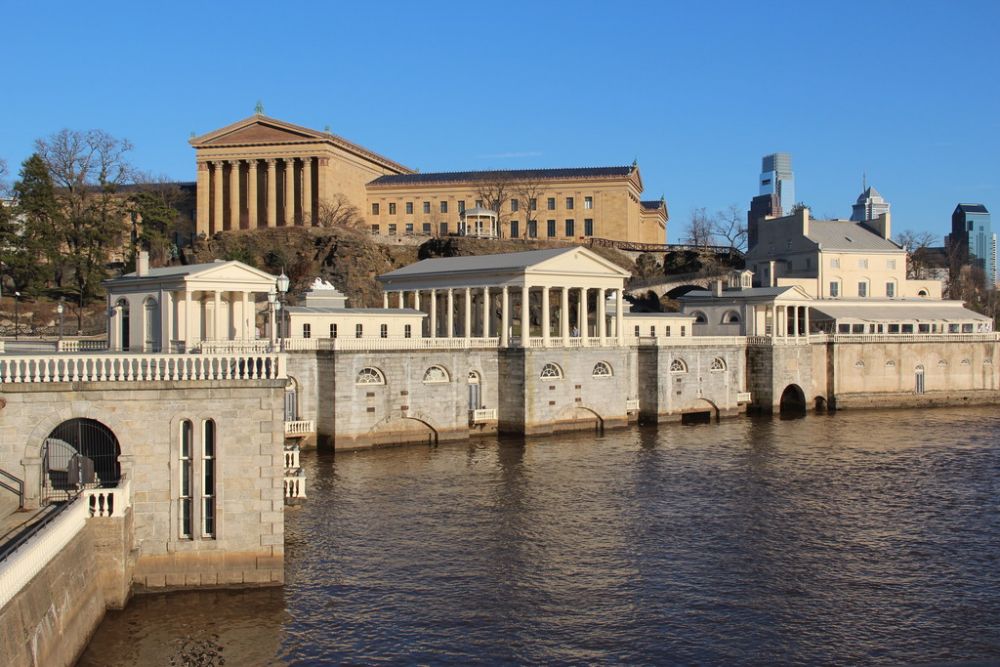 Source Philadelphia Free Press
Waterside historical beauty in the big city
Source Philadelphia Free Press
Waterside historical beauty in the big city
The famous Water Works at Fairmount Park, once home to the machine room of Philadelphia’s State of the Art Waters Department, is a national landmark with breathtaking views of Boathouse Row and the downtown skyline from its waterfront location next to the bottom end of the Philadelphia Museum of Art. The Water Works, formerly a restaurant and lounge, is now an eminently majestic setting for events.
The Fairmount Water Works (FWW) is dedicated to promoting the management of our shared water resources by encouraging informed decisions about land and water use. They educate citizens about the Philadelphia urban watershed – it’s past, present and future – and work with partners to instill an appreciation of the links between everyday life and the natural environment. The Fairmount Water Works is a national historic site, a civil engineering site and a national mechanical engineering site. It was designed and built to provide clean, safe drinking water for a city that is poised to grow remarkably well. This is a fun twist to any history buffs regular destinations!
Get Tickets :Free!Hours of Operation :Open Tuesday-Saturday, 10 AM-5 PM, Sunday, 1 PM-5 PM -
2
Independence hall
The foundation of America
Call Them View Tickets TripAdvisor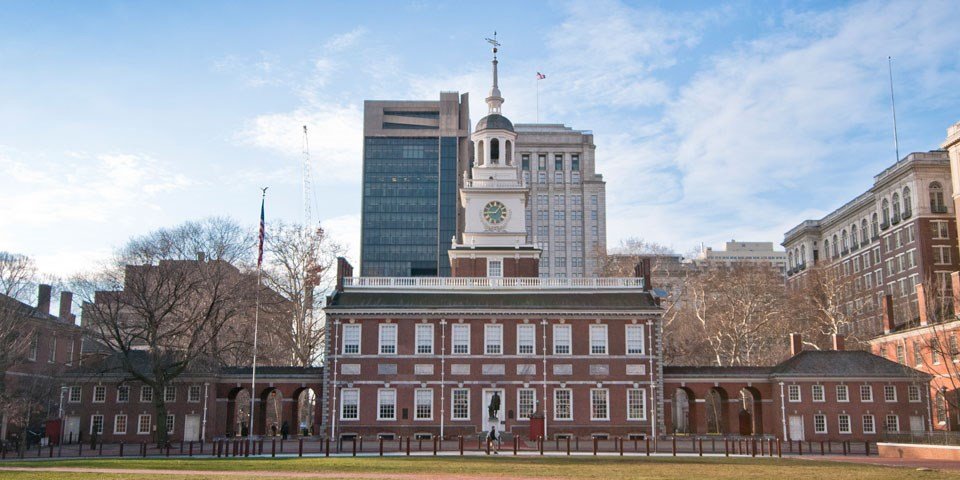 Source NPS.gov
Visit where it all started
Source NPS.gov
Visit where it all started
Rich in history, there is plenty to explore in this UNESCO World Heritage Site. Independence Hall is also part of the US National Parks Service and National Independence National Park. The guided tour of Independence Hall, led by national park rangers, begins in the courtroom where lawyers from opposing parties have shared tables and legal books. George Washington’s “rising sun” chair dominates the assembly hall, which is laid out as in the original constitutional convention. In the adjoining west wing, the inking support used to sign the declaration of independence and an original draft constitution is prominently displayed.
Admission is by visit only and you will need entrance tickets scheduled between the peak months of March and December. If you happen to go outside rush hour, you will not need a ticket in January-February or after 17 hours during the summer hours. Plus, you do not need tickets on Thanksgiving Day, Christmas Eve (December 24) or Independence Day (July 4). If you do not mind a little effort, every day, a limited number of free tickets are available at the Independence Visitor Center’s gatekeepers’ station, which is also the only place to get your entry free and timed tickets.
Get Tickets :Free!Hours of Operation :Through May 24, 2019: Open daily 9am to 5pm, May 25 - September 2, 2019: Open daily 9am to 7pm -
3
Congress Hall
The original home of the U.S. Congress
Call Them TripAdvisor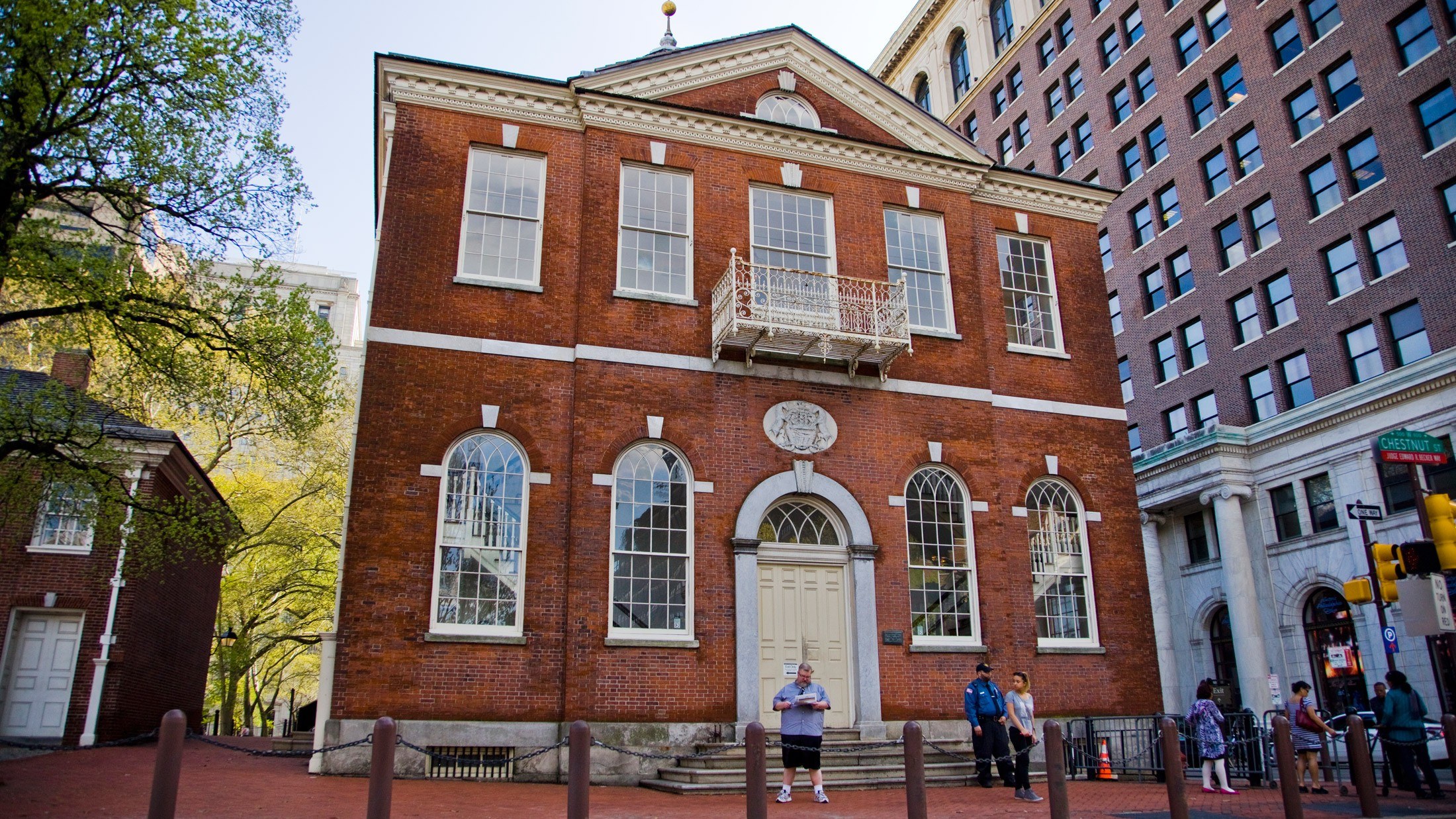 Source: Visit Philadelphia
Simple, yet powerful
Source: Visit Philadelphia
Simple, yet powerful
The Convention Center is closed on all federal holidays except Memorial Day, Independence Day, Labor Day, Columbus Day and Veteran’s Day. No ticket is required to visit the convention center. Entry is on a first-come, first served basis. Entry is by visit only, from March to December. The visit lasts about 20 minutes. From April to October, visits take place every 20 minutes. In November, December and March, visits take place every 30 minutes.
The building is autonomous in January and February, but guides are available to answer questions. The first floor of the congress hall is accessible to people with reduced mobility. There is a photo album with pictures of the upper floor for those who cannot climb the stairs to the second floor. For the hearing impaired, the flyer “The birthplace of a nation” provides written information about the rooms presented. Learn more about accessibility services available throughout the park on the website. Visitors must pass through a security checkpoint to visit the buildings on Independence Square, including the convention center.
The projection area is adjacent to the former Town Hall, near the corner of 5th and Chestnut Streets. In order to maximize your visit to the park and minimize your security check time, the park recommends that you only bring small bags, if necessary. The less you have to check the items, the more time you will have to enjoy the buildings located on Independence Square.
Get Tickets :Free!Hours of Operation :Open daily, 9 AM-5 PM -
4
First Bank of the United States
See where the first banking took place first hand!
Call Them TripAdvisor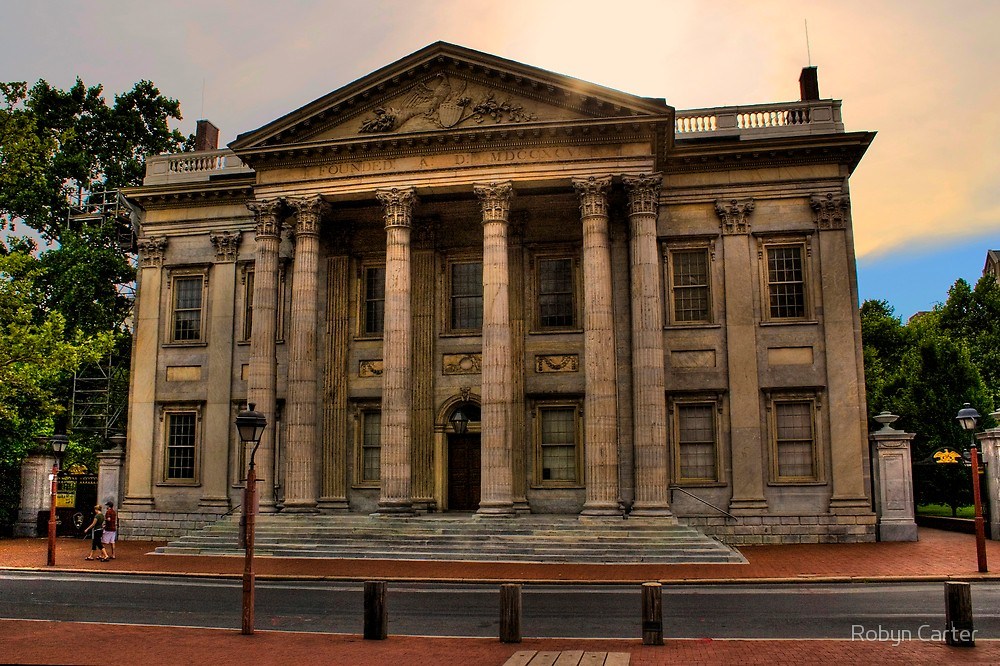 Source RedBubble
We all love money!
Source RedBubble
We all love money!
Built between 1795 and 1797, while Philadelphia was the capital of the United States, the First Bank was Hamilton‘s solution for its huge war debt. As Treasury Secretary, Hamilton has also developed a standard currency for use by all states. Although the First Bank is not open to visits, the classical architecture allows you to take breathtaking photos. The first building bank in the United States is an excellent example of classic / neo-style architecture.
It was designed by Philadelphia architect Samuel Blodget Jr. and was built between 1795 and 1797. Although the interior of the building is not open to the public, the exterior of the building is interesting in itself. Look for the magnificent first mahogany bank of the American cornucopia, oak and eagle branch, made by the artist Clodius F. Legrand in 1797, located on the pediment of the two-story portico on the facade of the building. Be sure to take a look at the other eagle above the walkway that leads to the courtyard on the north side of the building.
Get Tickets :Free!Hours of Operation :Available to view 24 hours! -
5
Museum of The American Revolution
Get into a patriotic mindset
Call Them View Tickets TripAdvisor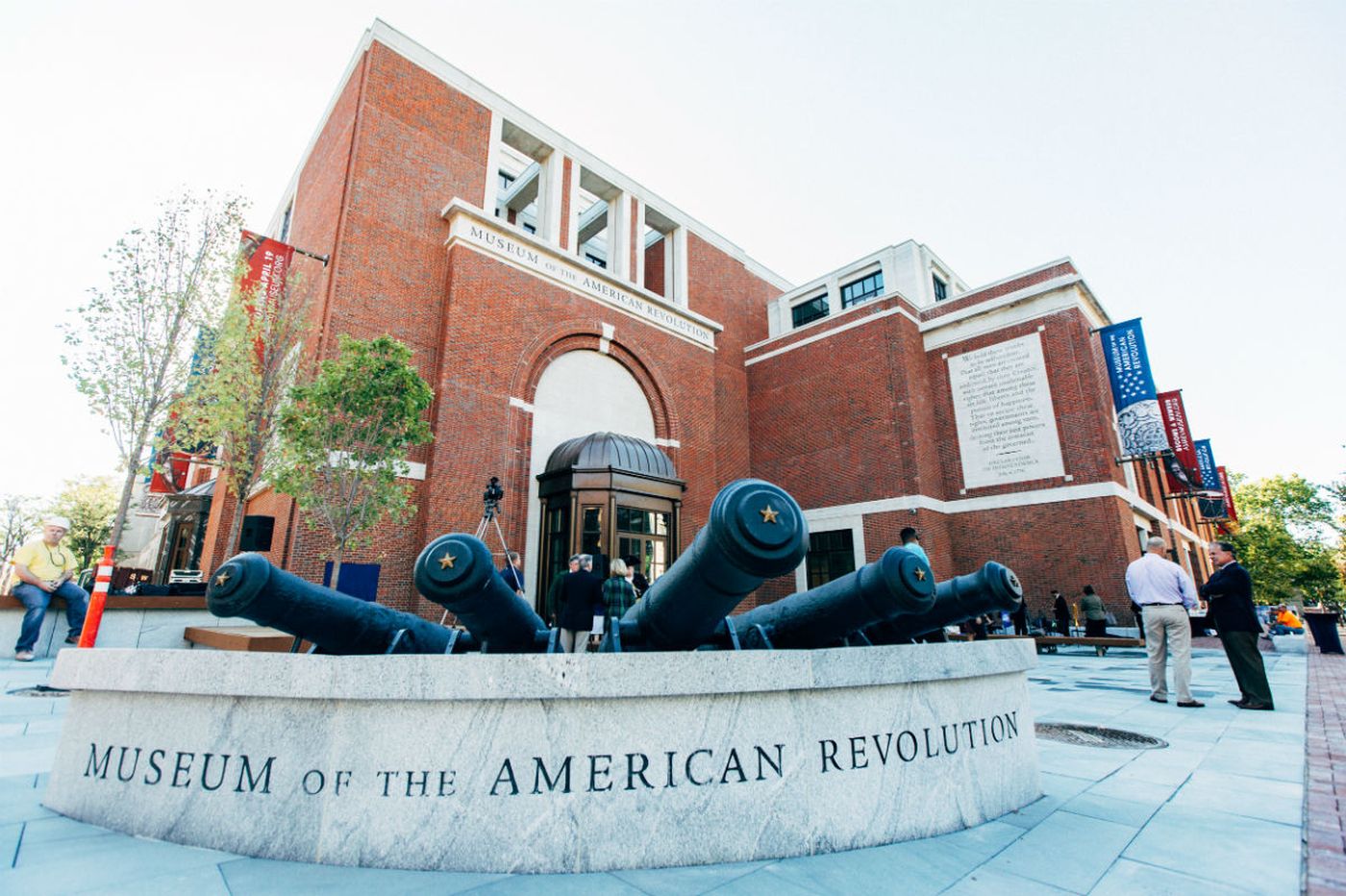 Source Philly.com
Learn the rich history of the roots of the USA
Source Philly.com
Learn the rich history of the roots of the USA
Philadelphia was one of the crucial centers of the American Revolution, making the historic district of Philadelphia the perfect place for a complete museum. The Museum of the American Revolution is an essential artifact deposit and an absolute treat for American history buffs. Covering an area of 118,000 square feet, housed is an extensive collection of art, manuscripts and printed works from the country’s revolutionary period. It also presents a range of objects collected in and related to the War of Independence, including British, French and American weapons used in combat and personal journals written in the camp.
The exhibitions of the Museum of the American Revolution offer a global picture of the American Revolution, and explores stories of Africans, Native Americans and liberated and enslaved women, in addition to founding fathers and soldiers of the War of Independence. This is shown through immersive demonstrations and fascinating artifacts that create a modern-day storytelling experience. Visitors will discover that the galleries of the museum are organized chronologically to make you travel from the beginning of the conflict in the 1760s until the creation of our country.
The exhibition space also plunges into the challenges of creating a new nation and the lasting impact of revolutions on the world. One of the museum’s most memorable pieces is General Washington’s headquarters tent, an iconic piece of history where President George Washington slept and made decisions that would change the world.
Get Tickets :Tickets start at $13Hours of Operation :Open daily, 10 AM-5 PM -
6
Fort Mifflin
A beautifully kept Fort
Call Them View Tickets TripAdvisor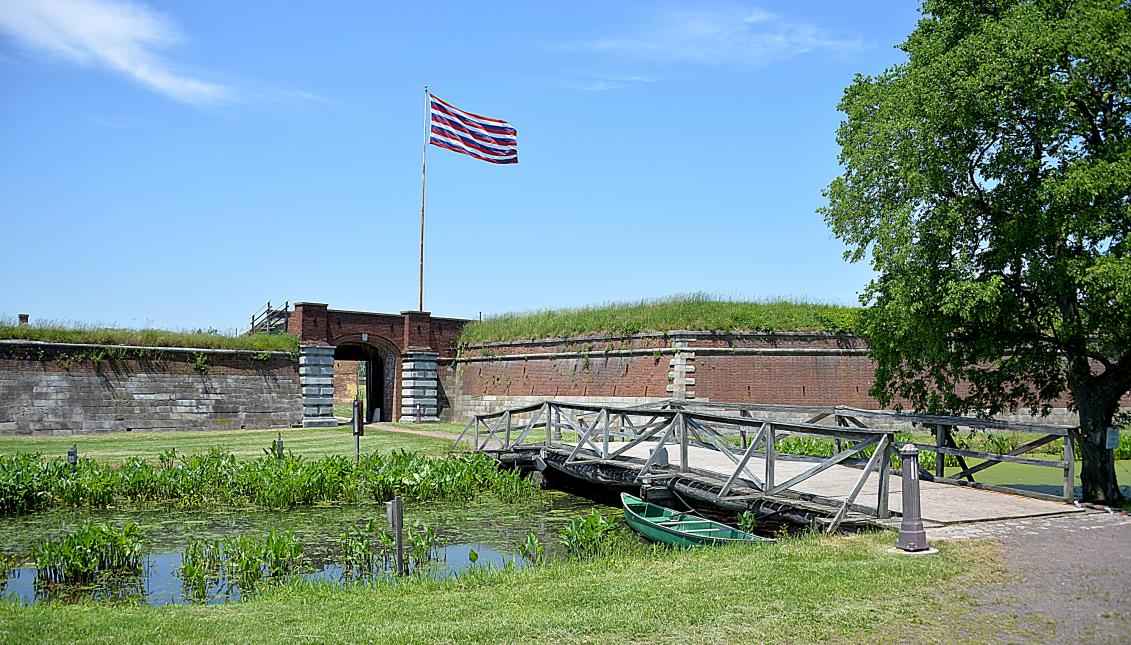 Source AL DÍA News
A must see for all history enthusiasts
Source AL DÍA News
A must see for all history enthusiasts
Fort Mifflin, open to visitors from March to December, offers tours focused on a battle of the War of Independence and the strategic location of the site in the Delaware River at the mouth of the Schuylkill River. Set on about 20 acres, a complex of about eight buildings survives with signs of British forces bombarding 1,000 cartridges every 20 minutes. Brown Bess rifles and other British-made war instruments are on display.
A unique stop is a shop that sells various replicas of artifacts and even colonial-style candies. Annual reenactments and other activities are punctuated by ghostly stories and buzzing airliners at Philadelphia’s nearby International Airport. Fort Mifflin is the oldest fortification used continuously in the United States. Nearly 350 Americans died in November 1777 when British forces bombed the site relentlessly by ships. But the Americans’ courage at Fort Mifflin gave George Washington time to regroup at Valley Forge.
The fort bears the name of General Thomas Mifflin, who later became governor of Pennsylvania and was known for his resistance to the slave hunters of Virginia. During the civil war, the facility accommodated civilians as well as Confederate prisoners and the Union.
Get Tickets :Tickets start at $4Hours of Operation :When in season, Open Wednesday-Saturday, 10 AM-4 PM -
7
Mother Bethel and Richard Allen Museum
A stunning relic of religion in the US
Call Them View Tickets TripAdvisor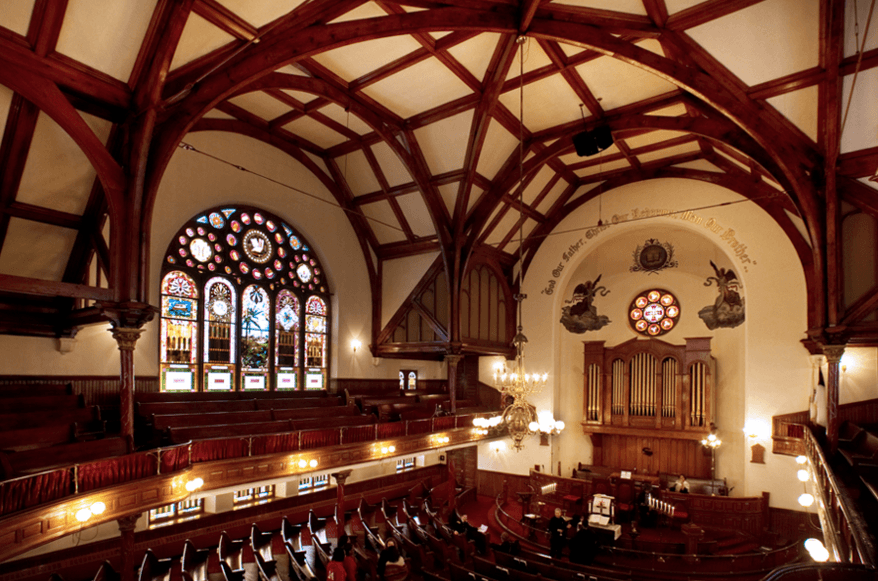 Source Billy Penn
Be amazed by the renowned stained glass
Source Billy Penn
Be amazed by the renowned stained glass
Take a stroll on sacred ground at Mother Bethel AME Church, the mother church of the country’s first black denomination. Founded in 1787, the church rests on the oldest piece of land in the United States that is permanently owned by African Americans. The church commemorates Reverend Richard Allen, the founding pastor, and first bishop.
A basement crypt serves as a museum, housing Allen’s grave and other fascinating artifacts, including the original benches, the original chair built and used by Reverend Allen, the old urns used to elect officers from the church and muskets dating back to the time Allen had mobilized black troops War of 1812. When visiting the church, do not miss its collection of huge stained glass windows with both religious and Masonic images. Near Mother Bethel, in the 6th and Lombard streets, is a historic monument dedicated to the Free African Society.
The concept of identity and unity of the Free African Society in the black community became the precursor of the country’s first African-American churches and civil rights institutions. A few blocks away, at 336 Lombard Street, another marker specifically honors James Forten, who would have amassed a fortune exceeding $ 100,000 using a multi-ethnic workforce. In addition, he helped organize the first African-American convention in Philadelphia in 1830.
Get Tickets :Cost varies by tourHours of Operation :Open daily, 10 AM-4 PM, Sunday for service -
8
American Museum of American Jewish History
A elegant rendition of American Jewish culture
Call Them View Tickets TripAdvisor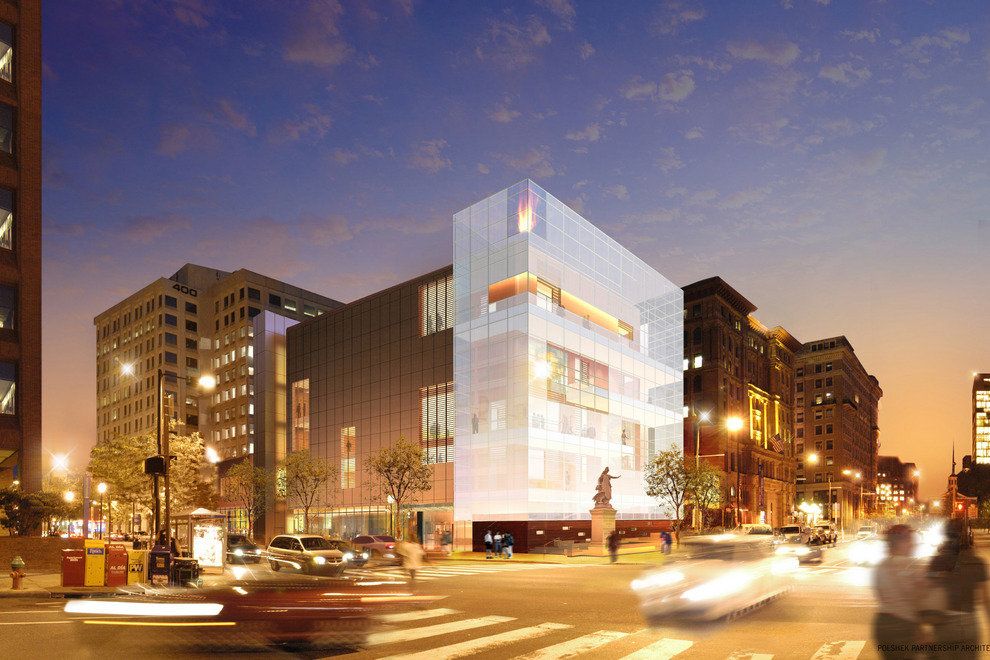 Source 10Best.com
A Smithsonian Affiliate sure to impress!
Source 10Best.com
A Smithsonian Affiliate sure to impress!
Explore 360 years of Jewish life in America at the National Museum of American Jewish History, located right on Independence Mall. Glance through 360 years of Jewish history in the United States at the National Museum of American Jewish History, which contains more than 1,200 artifacts and documents, 2,500 images, 30 original films, and 13 state-of-the-art interactive displays.
The experience gives us a rich narrative that traces the path traveled by the Jewish population of our country from immigrants in difficulty to full citizens. The museum seeks to motivate individuals from all fields of life to have a greater understanding of the diversity of the American Jewish experience and the freedoms to which all Americans aspire.
Get Tickets :Tickets start at $12Hours of Operation :Open Tuesday-Friday, 10:00 AM-5:00 PM, Saturday and Sunday, 10:00 AM-5:30 PM -
9
Christ Church and Burial Ground
The resting place of countless icons
Call Them View Tickets TripAdvisor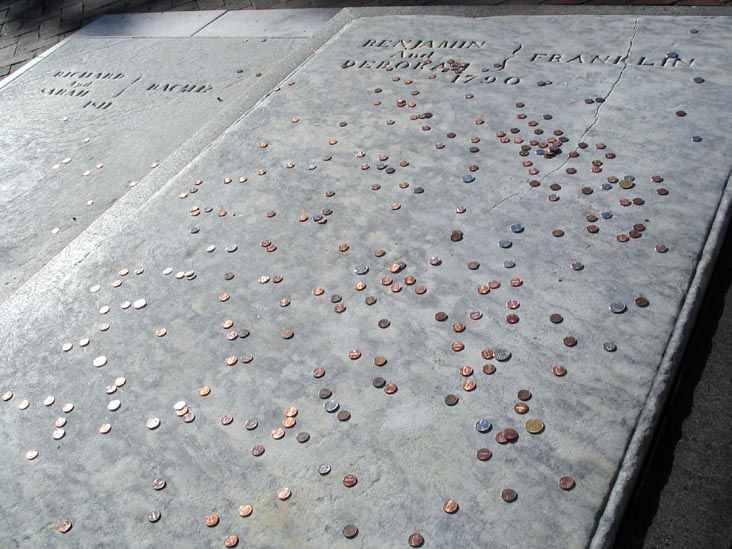 Source Pinterest
A must stop to pay respect
Source Pinterest
A must stop to pay respect
A stone’s throw from the Independence Visitor Center, Christ Church is a must-see venue for any stay in Philadelphia’s Historic District. Inside its doors are the graves of many historic leaders, including signatories of the Declaration of Independence, as well as ordinary citizens. Benjamin Franklin and his wife Deborah are buried here, as is the man who dug their graves. John Dunlap, who printed the Constitution and Declaration of Independence, composer and poet Francis Hopkinson and pioneers of medicine, Drs. Benjamin Rush and Philip Syng Physick were also buried in the area.
Divided into quadrants, the ground is mapped and the parcels are identified by markers where the original inscriptions have disappeared. The Church of Christ, located three blocks away, acquired this cemetery “on the outskirts of the city” in 1719 after filling its cemetery. The Franklins’ gravestones are easily visited, as evidenced by a large number of penny coins thrown at Benjamin Franklin’s burial site. Not only is a nod to Franklin’s motto that “a penny saved is a penny earned,” this is considered a symbol of luck, so be sure to pack a few cents off if you plan to visit this monument.
Get Directions :Get Tickets :Admission starts at $1Hours of Operation :Open Mondays-Saturday, 10 AM–5 PM, Sunday, 12:30 PM–5 PM -
10
Walnut Street Theatre
America's oldest Theatre
Call Them View Tickets TripAdvisor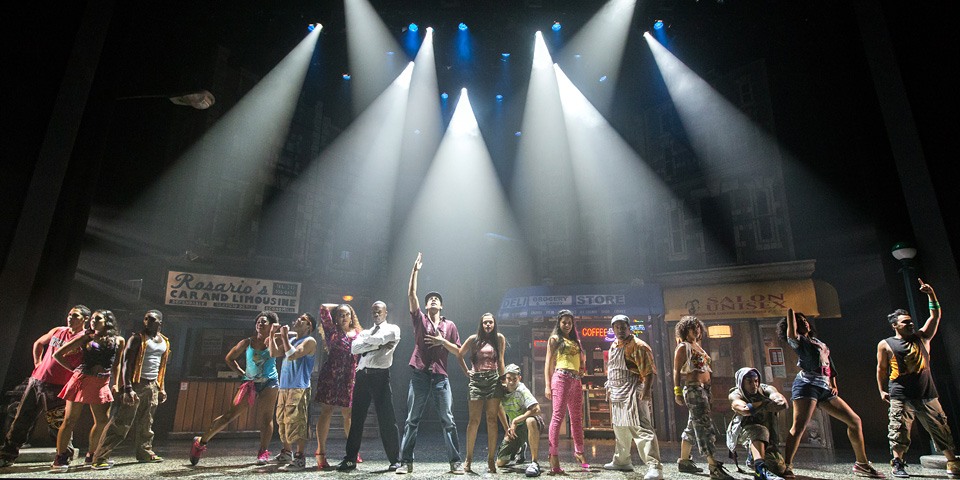 Source Walnut Street Theatre
A historic, active Theatre
Source Walnut Street Theatre
A historic, active Theatre
National Historic Monument and Pennsylvania State Theater, Walnut Street Theater is the oldest theater in the city of brotherly love. Today, the historic space offers some very popular theatrical dishes, including proven hits such as Neil Simon’s My Fair Lady, The Sound of Music and Brighton Beach Memoirs. Property of the great classic actor Edwin Booth (brother of John Wilkes), and other heritage of Walnut is preserved in the excellent display of photos and memories.
The attractiveness of the repertoire is reflected in the size of its audience, which is the largest regional theater company in the world. While making its circus debut in 1809, the Walnut Street Theater quickly defined theatrical trends: the installation of the country’s first gas fires (1837) and air conditioning with Mr. Barry’s Cool Machine Machine patent(1855). Some of the most famous actors in the world have played, including Marlon Brando, Paul Robeson, Audrey Hepburn, Helen Hayes, Groucho Marx, Sidney Poitier and many others.
With its century-old bricks beautifully displayed in places, today’s viewers can indeed touch the history of the place. The Walnut Street Theater offers several ways to save money. A limited number of discount tickets are available for each show, making the theater accessible to a wider audience. Discounts are also available for members of the military and members of the entertainment industry.
Get Tickets :Varies by showHours of Operation :The box office is open daily 10 AM-10 PM -
11
African American Museum in Philadelphia
The rich culture of African Americans
Call Them View Tickets TripAdvisor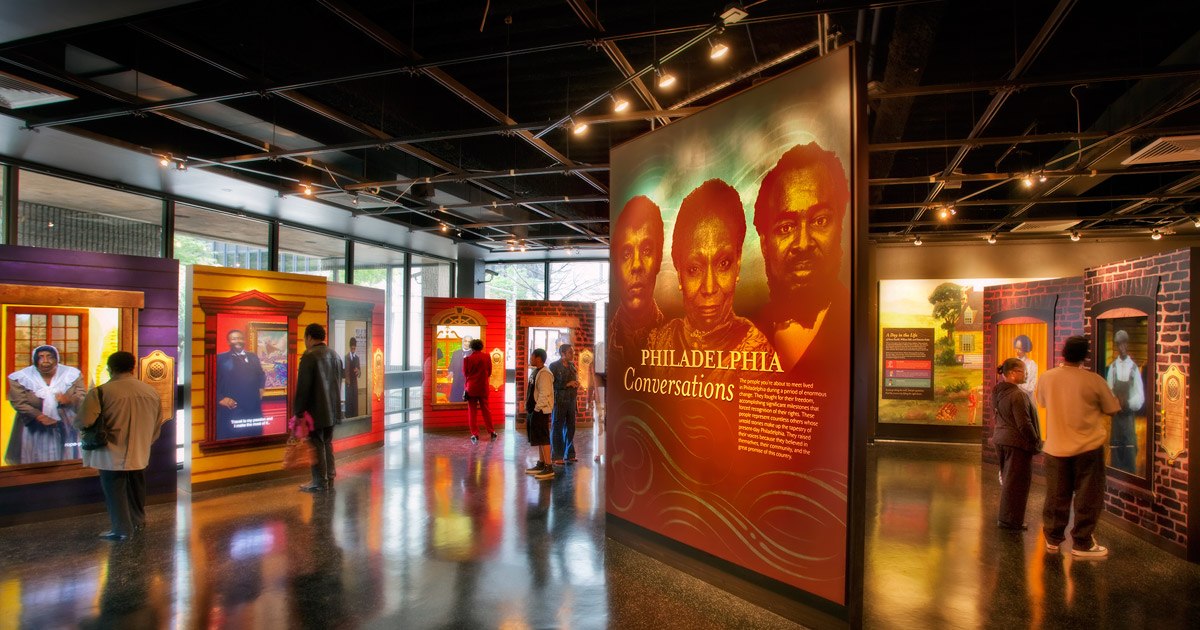 Source Visit Philly
A must stop for those of all backgrounds
Source Visit Philly
A must stop for those of all backgrounds
The Philadelphia African-American Museum, affiliated with the Smithsonian Institution, was one of the museums to open during the 1976 bicentennial celebration in the city. Located only a few blocks from the Liberty Bell, the museum’s modern public sculptures, The Whispering Bells and Nisaka, are distinctive landmarks of the downtown historic district.
The African American Museum of Philadelphia, founded in 1976, is the first institution built by a major American city to preserve, interpret and exhibit the heritage and culture of African Americans. The museum takes a fresh and bold look at the stories of African Americans and their role in founding the nation through the permanent exhibition Audacious Freedom: African Americans in Philadelphia from 1776 to 1876, allowing Octavius Catto, Richard Allen, and other pioneers tell their stories via technology, photographs, videos and artifacts on display.
The museum’s upper galleries host a series of rotating special exhibitions that explore African American history, social issues, and the African Diaspora through works of art, multimedia exhibits, historical artifacts, and information panels. The museum offers a rotating calendar of programs and events, ranging from lectures and film screenings to concerts, book signings, workshops and much more. Families with kids enjoy Macy’s Family FunDay, a monthly activity when the museum offers a full range of fun family activities, included in the price.
Get Tickets :Tickets start at $10Hours of Operation :Open Wednesday-Saturday, 10 AM-5 PM, Sunday, 12 PM-5 PM -
12
Merchants' Exchange
The oldest trading building in the country!
Call Them TripAdvisor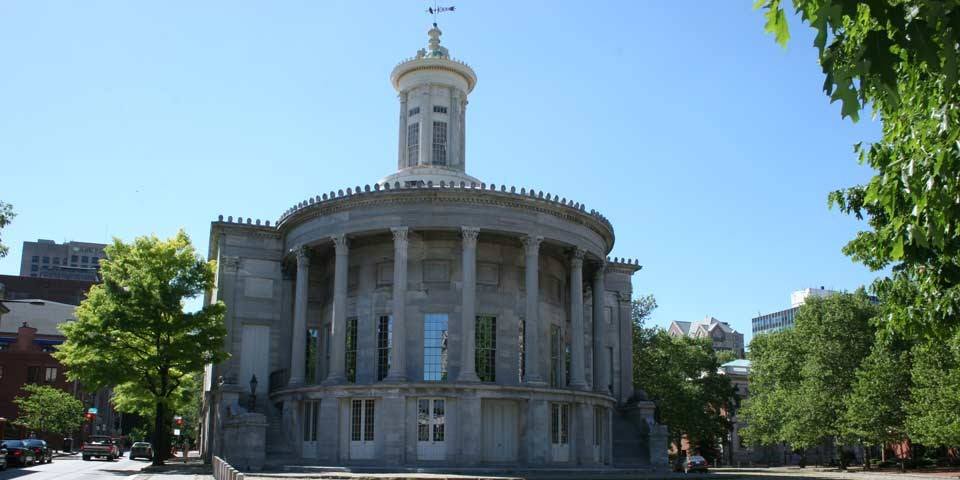 Source NPS.gov
"Shop" around, or take in the history!
Source NPS.gov
"Shop" around, or take in the history!
This landmark in Philadelphia was the gathering place for those who sold all kinds of cargoes and goods. Designed by architect William Strickland and inaugurated in 1834, the Merchants Exchange is the oldest trading building in the country. While the interior is currently closed to visitors, with the exception of a small lobby with an architecture highlighting the architecture and history of the building.
The exterior of classical Greek style, with its curved facade and its marble columns, is quite impressive. The windows are high and let in lots of sunshine and offer a beautiful view of the river. The tower at the top of the structure is a free adaptation of Choragic Monument of Lysicrates. This tower would make it possible to climb the tower to watch the ships go up and down the Delaware River. Visitors can enjoy a small public exhibition and the outdoors are a good opportunity to take pictures.
Get Tickets :Free!Hours of Operation :Open Monday-Friday, 8:30 AM-4:30 PM -
13
Hill-Physick House
The only free-standing Federal townhouse remaining in Society Hill
Call Them View Tickets TripAdvisor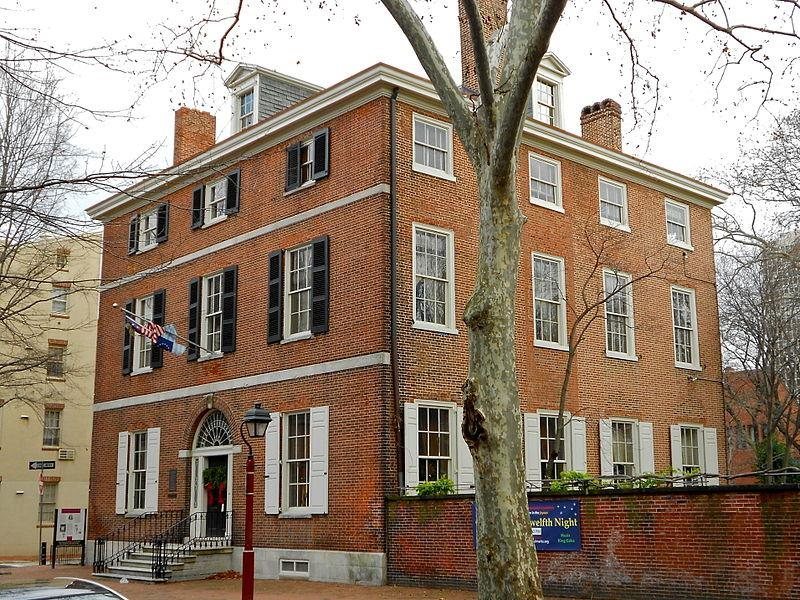 Source PA Haunted Attractions
Relive 18-19th century medical technology
Source PA Haunted Attractions
Relive 18-19th century medical technology
Richly furnished in the Empire and Federal styles, a visit to Hill-Physick House (located at Society Hill) includes some of the medical and surgical tools he invented – bleeding instruments, stomach pumps, tongs and tubes to remove kidney stones. Primitive, certainly, but Dr. Physick’s treatments were at the forefront of medical technology in the 18th and 19th centuries. Many historians believe that Dr. Philip Syng Physick sold the first flavored carbonated beverage at $ 1.50 a month to treat his patients and relieve stomach upset.
The soda has been reconditioned to black cherry for modern drinkers and is made from sugar cane by Philadelphia Brewing Company. The Hill-Physick House is a surefire way to enjoy a historical trip into the city and to make memories.
Get Tickets :Tickets start at $8/$20 a familyHours of Operation :Public tours are available on the hour 11:00 AM through 3:00 PM (last tour) Thursday-Saturday April-November -
14
Carpenters' Hall
The first American building to be opened as a historic monument
Call Them TripAdvisor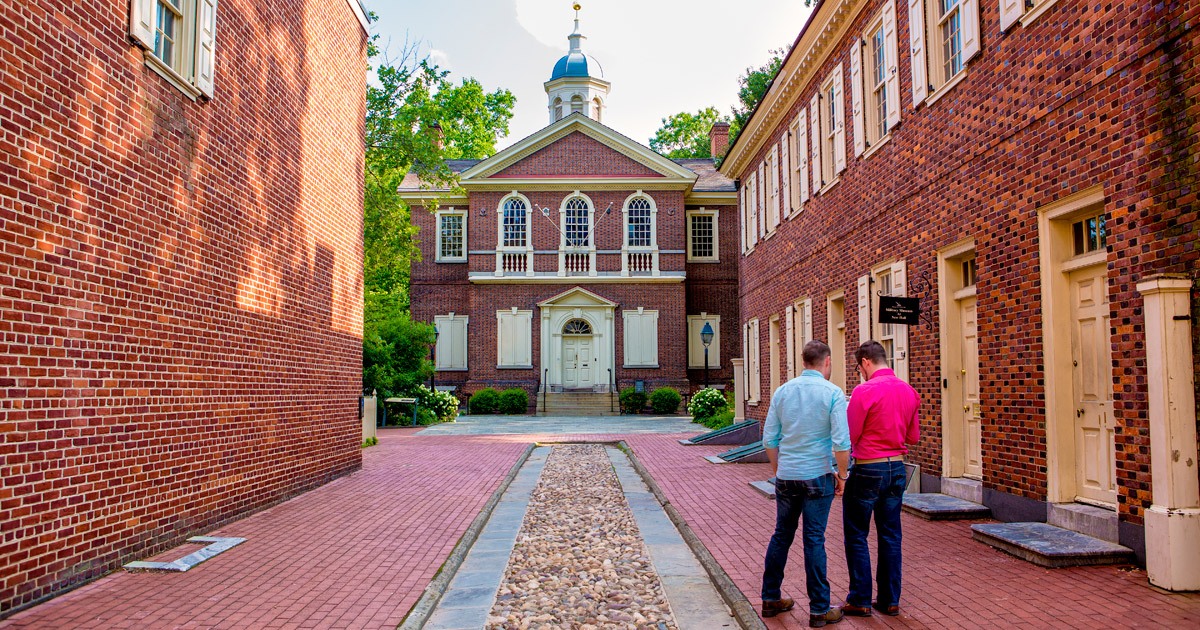 Source Visit Philly
A true work of craftsmanship
Source Visit Philly
A true work of craftsmanship
In 1774, delegates from 12 colonies (Georgia abstained) met at Carpenters’ Hall and voted in favor of a trade embargo against England, one of the first unified acts of defeat against the king. Delegate seats and the original banner worn during the 1788 Constitutional Parade are also posted. Carpenters’ Hall still belongs to members of society. The building itself deserves to be recognized by itself. Built by craftsmen for craftsmen, the model, the dome and the Flemish junction brick windows are almost perfect examples of Georgian architecture.
Inside, a model shows the 18th-century methods used in the construction of the building. Children can go on a treasure hunt to find out how many Carpenters’ Company emblems are included in the building’s interior. Floor tiles were a 19th-century addition. Ironically, the supplier, a British company, also supplied tiles for the US Capitol. Today, Carpenters’ Hall is free to the public and welcomes more than 150,000 visitors from around the world to this magnificent Georgian building. The entrance has been free since 1857 when it became the first American building to be opened as a historic monument.
Get Tickets :Free!Hours of Operation :Open Tuesday-Sunday, 10 AM-4 PM -
15
Eastern State Penitentiary
A concrete jungle
Call Them View Tickets TripAdvisor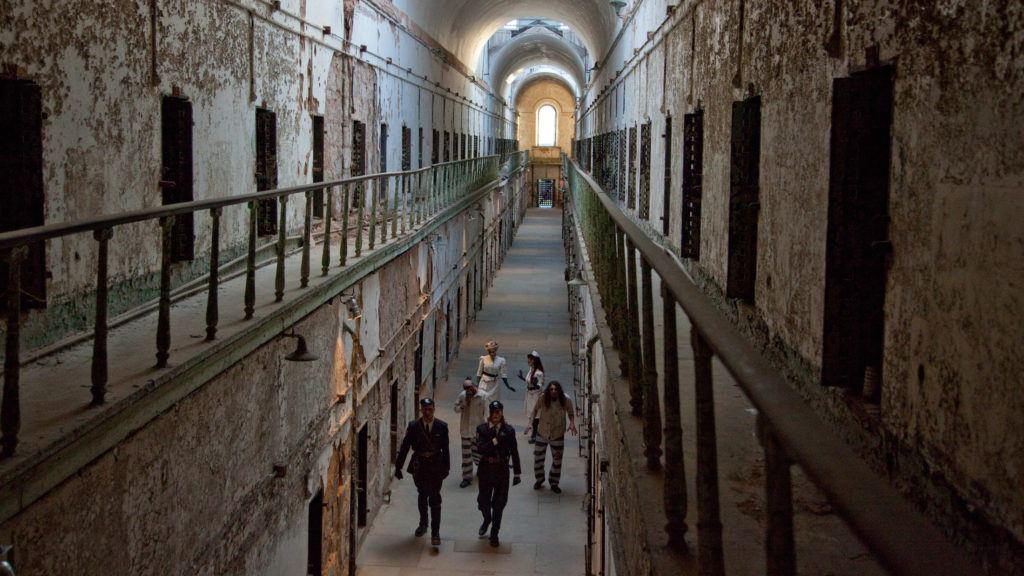 Source Visit Philly
See what life is like inside a prison...for the day
Source Visit Philly
See what life is like inside a prison...for the day
The Eastern State Penitentiary was once the world’s most famous and expensive prison but is now in ruins, a world haunted by crumbling blocks of cells and empty guard towers. Its vaulted, sky-lit cells once housed many of America’s most famous criminals, including “Slick Willie” Sutton and “Scarface” Al Capone. The Eastern State Penitentiary Historic Site literally gives visitors the keys to cell pavers with interactive historic experiences. These brief demonstrations take place throughout the penitentiary complex and each lasts approximately five minutes.
An expert guide from the Eastern Eastern State directs each activity, although visitors do most of the physical activities themselves. The United States now has the highest incarceration rate in the world, with 2.2 million people imprisoned. This phenomenon has generally been caused by changes in law, police, and sentencing, and not by changes in behavior. The results have had a disproportionate impact on poor and deprived communities. On the other hand, these historical changes remain almost invisible to many Americans.
Get Tickets :Admission starts at $10Hours of Operation :Open daily, 10 AM-5 PM -
16
American Philosophical Society Museum
Invaluable relics of America
Call Them TripAdvisor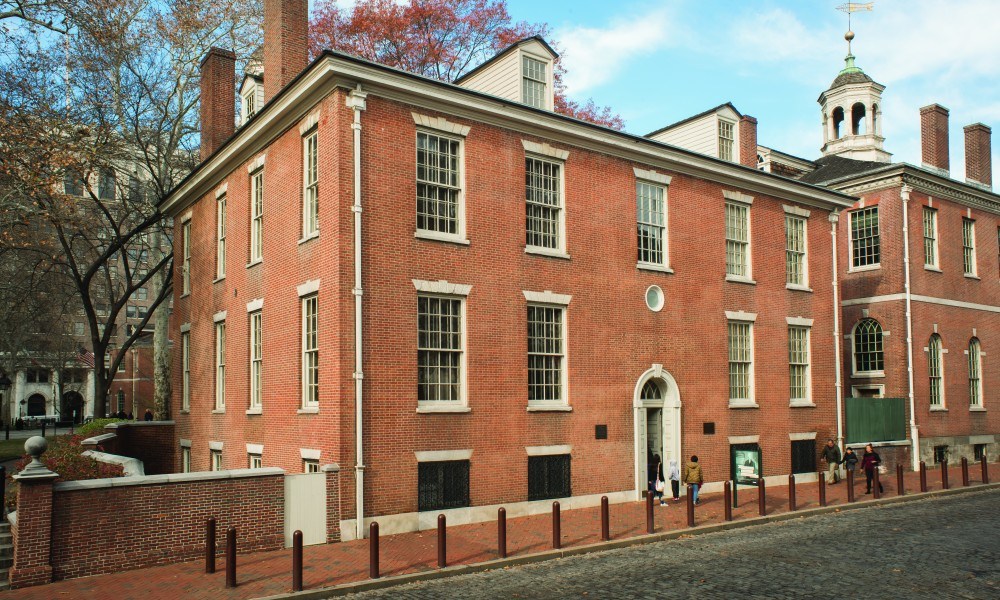 Source amphilsoc.org
See Lewis and Clarks journal in person!
Source amphilsoc.org
See Lewis and Clarks journal in person!
Tucked behind Independence Hall’s east wing is the American Philosophical Society Museum, a brick building built in the late 1780s. The American Philosophical Society Museum is open from April to December. The building served as the first museum, national library and science academy of our country. Today, the museum organizes rotating exhibitions that highlight intersections of science, history, and art.
Some of the notable collections found in this museum include the Lewis and Clark journals, Jefferson’s handwritten copy of the Declaration of Independence, in addition to other manuscripts, maps, models, rare books, patent, scientific specimens, and other important documents. The American Philosophical Society Museum was founded by Benjamin Franklin to encourage philosophical discourse and propagate useful knowledge. The American Philosophical Society has for over 270 years maintained and combined a rich collection that traces the science of the United State of America from the forefathers to the computer age
Get Tickets :Free!Hours of Operation :Open Monday-Friday, 9 AM-5 PM -
17
Founder's Hall at Girard College
Explore the complex life of one the wealthiest men in American history
Call Them TripAdvisor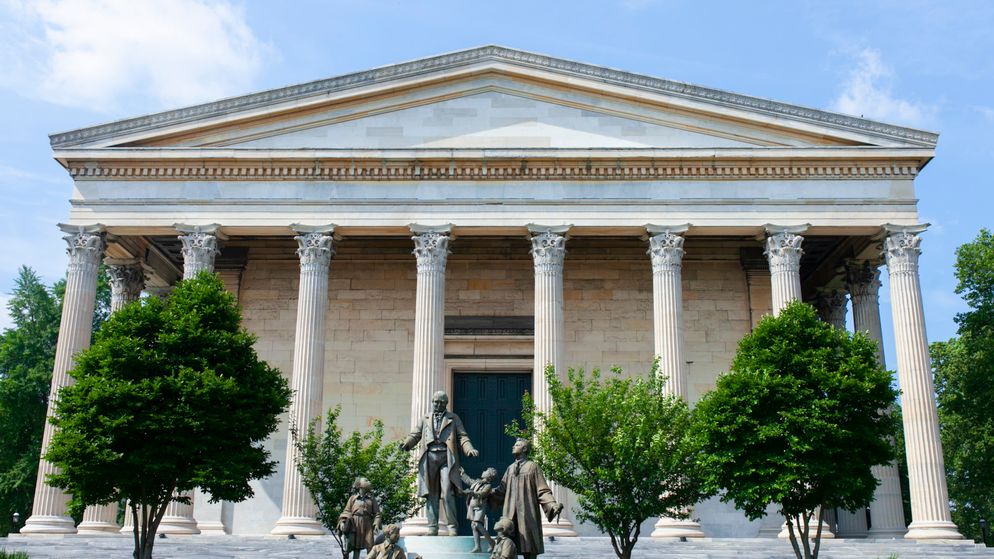 Source Billy Penn
Take in breathtaking neo-Greek American architecture
Source Billy Penn
Take in breathtaking neo-Greek American architecture
The Founder’s Room, located at Girard College (1833-1847), is considered one of the finest examples of neo-Greek American architecture. The founder of the school, Stephen Girard, specified in his will the dimensions and the plan of the building. Nicholas Biddle (1786-1844) was chairman of the school’s construction committee, banker and financier, and president of the second largest bank in the United States in Philadelphia. Girard’s desire required an architectural competition for the design of the school. With its $ 2 million dollars in contributions, the 1832 competition is the first American architectural competition to have national participation.
The winning architect was Thomas Ustick Walter (1804-1887). After the Girard commission, Walter designed the dome of the United States Capitol in Washington, DC He then returned to Philadelphia and became deputy architect at the Town Hall and, in 1857, founding member of the American Institute of Architects (AIA). The Founder’s Room was the original classroom of the school. It has three main floors, each measuring 14,000 square feet. The plan for each floor, according to Stephen Girard’s specifications, includes a 100-foot by 20-foot lobby, four 50-square-foot rooms with 25-foot ceilings arranged in pairs, and a rear hall that is the same size as the lobby. The size of the spaces was impressive when the building was first opened.
Get Tickets :Free!Hours of Operation :Open Thursdays, 9 AM-2 PM -
18
Declaration House
Take in the home that started what is America today
Call Them TripAdvisor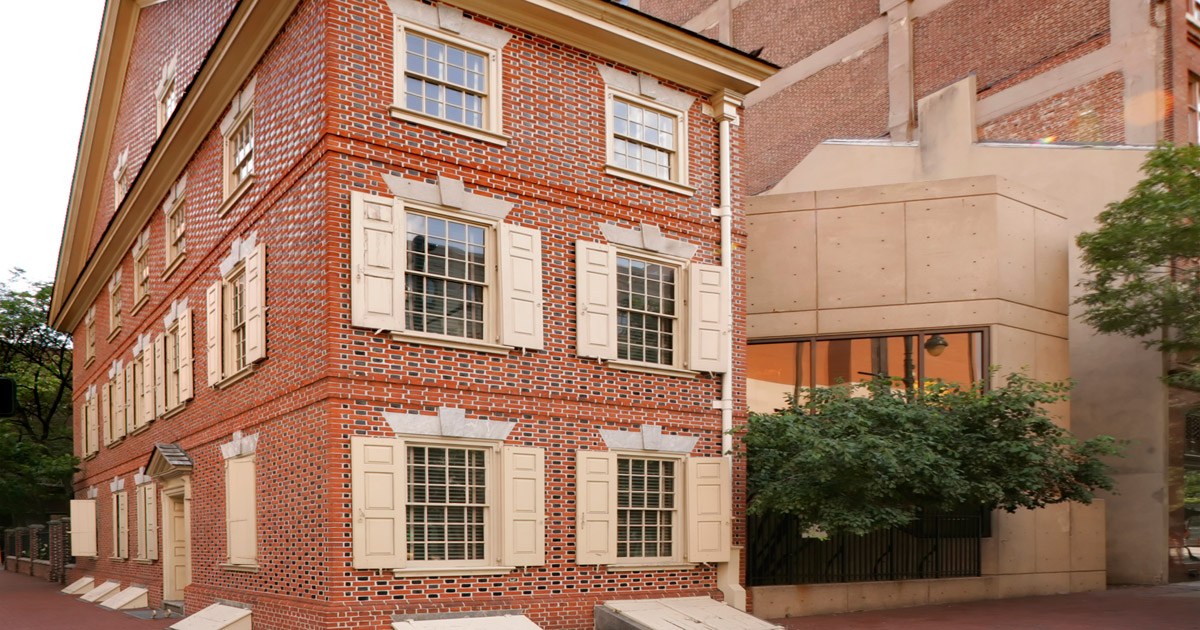 Source Visit Philly
Cross this off your bucket list today!
Source Visit Philly
Cross this off your bucket list today!
The essential words that created a new nation were written by Thomas Jefferson at the home of Jacob Graff, Jr. Visitors to the Declaration (Graff) House can view first floor exhibitions and a short film about Jefferson’s efforts at home where he rented two rooms on the second floor of Graff, a well-known bricklayer. The reconstructed Georgian structure on the second floor shows the living room in which Jefferson worked, as well as his bedroom where it is likely that a slave from Virginia accompanied him.
Period furniture, some recreated, are also visible. Originally built in 1775, the red brick house is known as the ‘Graff House at Seventh and Market Street’ was rebuilt in 1975. In June 1776, Jefferson traveled to Philadelphia to attend the second Continental Congress and joined in the call for settlements to escape from Britain. He was famously chosen to write the timeless words of the Declaration. Jefferson finished the job in about three weeks.
Get Tickets :Free!Hours of Operation :Open daily after May 24th, 12 PM-5 PM -
19
Old City Hall
The birthplace of America
Call Them TripAdvisor Source NPS.gov
Full of history, shops, and more fun!
Source NPS.gov
Full of history, shops, and more fun!
Next to the Independence Mall, where the country’s founding fathers declared freedom, the old town is full of charming cobbled streets and a lot of 18th-century charm, as well as an obvious independent trend from owner-run shops to the lively art scene. Its proximity to the Liberty Bell, Penn’s Landing, and the Benjamin Franklin Bridge makes the Old Town a favorite spot for the people living on the outskirts and the people who live there.
People love the neighborhood for its trendy shops, great restaurants, eclectic galleries and theaters, and vibrant nightlife. Particularly popular on the first Friday of each month, art lovers stroll the streets for artistic walks throughout the year and hop from gallery to gallery. The Old City Hall is part of Philadelphia’s historic district and stretches from Vine Street to Walnut Street from north to south, and from 7th to Delaware River from west to east. The historic city of Philadelphia is the birthplace of the nation and the first World Heritage city in the United States, designated by the Organization of World Heritage Cities (OWHC).
It is also home to numerous restaurants and breweries, owner-managed boutiques, sliced art galleries and much more. Visitors and residents flock to the Old city for its historic attractions and waterfront. The historic heart of Philadelphia lies in Independence Mall. Home to Independence Hall and the Liberty Bell Center, the mall also has a number of cultural institutions, including the National Museum of American Jewish History and the National Constitution Center. Make sure you stop at the Independence Visitor Center to get tickets to city attractions and useful information.
Get Tickets :Free!Hours of Operation :Open daily, 9 AM-5 PM -
20
Second Bank of the United States
A cornerstone in banking America
Call Them TripAdvisor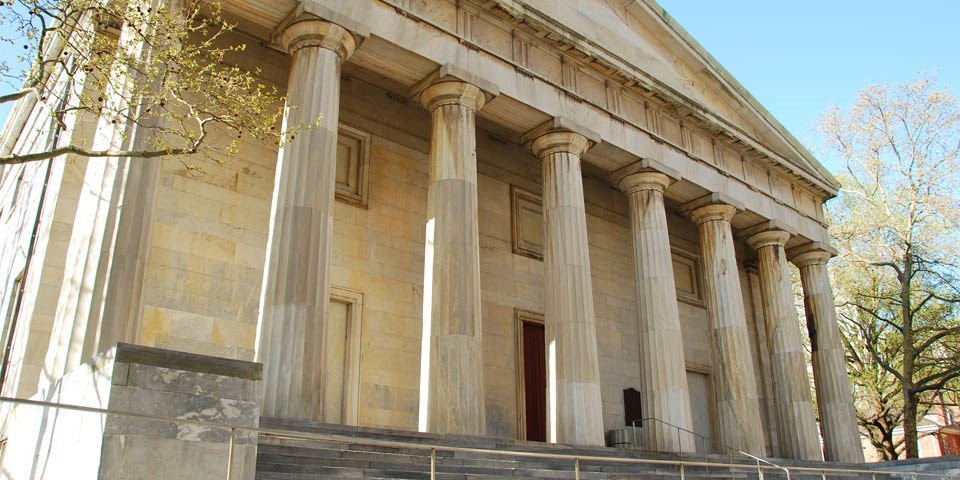 Source NPS
Standing beautifully at over 200 years old
Source NPS
Standing beautifully at over 200 years old
The second bank in the United States cuts across a wide range of 18th-century portraits in a relatively small space. It is also a veritable treasure of architecture, inspired by the Parthenon and serving as a standard bearer for many American bank buildings. Inside, it houses a depiction of portraits representing many men and women essential to the development of 18th century America.
Signatories of The Declaration of Independence Alexander Hamilton, Thomas Mifflin and, Robert Morris, as well as paintings of Marquis de Lafayette, Patrick Henry and, Casimir Pulaski are included in this list. The second largest bank in the United States took its place in history in 1832, when President Andrew Jackson vetoed a bill to re-found the bank because he considered it an unconstitutional monopoly. Running to be reelected, Jackson made his anti-bank stance a crucial issue in his campaign and easily defeated his opponent Henry Clay.
Eighty-five of the portraits presented here were made by Charles Willson Peale, one of the most famous portrait painters of ancient America. Children will be intrigued by George Washington’s pine sculpture, as well as by his original death mask.
Get Tickets :Free!Hours of Operation :Through April 30, 2019: Open Saturday - Sunday 11am to 5pm May 1 - May 24, 2019: Open Wednesday - Sunday 11am to 5pm May 25 - September 2, 2019: Open daily 11am to 5pm -
21
Dorrance Hamilton Hall, University of the Arts
A great array of art and history
Call Them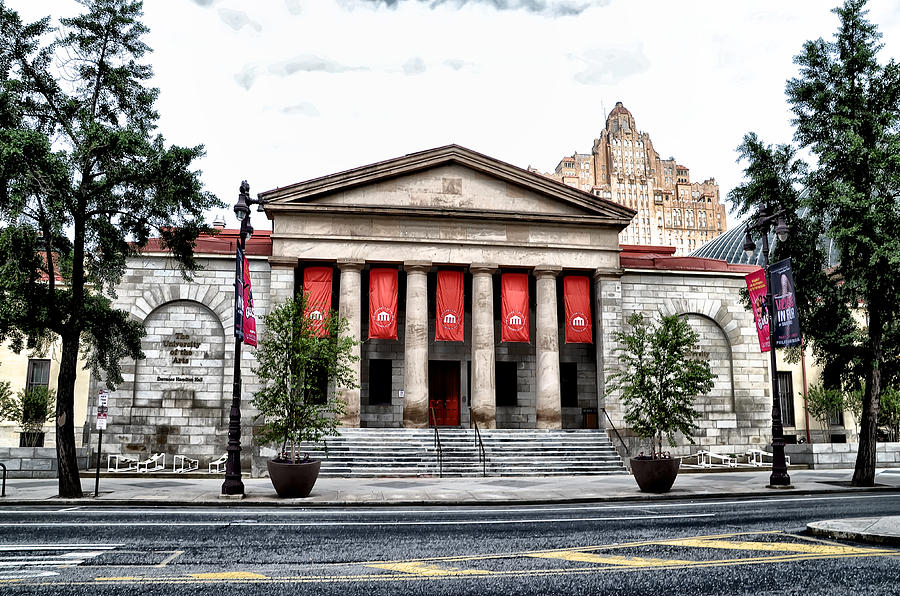 Source Fine Art America
Explore the world of greatness of The University of the Arts
Source Fine Art America
Explore the world of greatness of The University of the Arts
The Hamilton Hall Public Art Initiative brings art to the Avenue of the Arts, engendering public engagement with exceptional and thought-provoking works by Uarts’ students, alumni, faculty and regional artists. HHPAI functions as a form of outreach and an educational opportunity for the University community and the public at large. Students gain real-world experience meeting artists and witnessing the design and installation of public works.
The university was created in 1985 by the merger of the Philadelphia College of the Performing Arts and the Philadelphia College of Art, two schools that trace their origins to the 1870s. The university’s campus, located in the Avenue of the Arts cultural district of Center City, Philadelphia, includes 10 buildings with more than 850,000 square feet. The Visual Resources Collection includes 175,000 slides.
Additional university collections include the University Archives, the Picture File, the Book Arts and Textile Collections, and the Drawing Resource Center. U Arts‘ 10 galleries include one curated by students. Exhibitions have included the Quay Brothers, Vito Acconci, R. Crumb, Rosalyn Drexler, April Gornik, Alex Grey, James Hyde, Jon Kessler, Donald Lipski, Robert Motherwell, Stuart Netsky, Irving Penn, Jack Pierson, Anne and Patrick Poirier, Yvonne Rainer, Lenore Tawney, and Andy Warhol.
Get Tickets :Free!Hours of Operation :Monday: 9:00am - 12:00pm, 1:00pm - 5:00pm Tuesday through Thursday: 9:00am - 6:00pm, 7:00pm - 8:00pm Friday: 9:00am - 6:00pm -
22
Philadelphia History Museum
A showcase of Philadelphia's rich history
Call Them TripAdvisor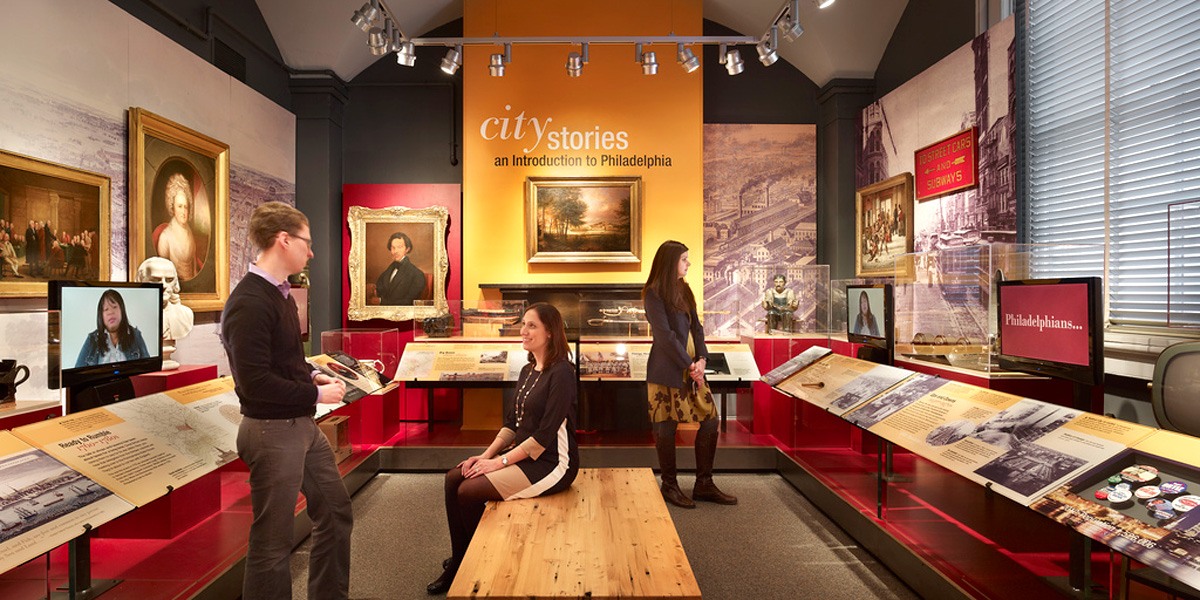 Source Philadelphia Museum
A must see for residents and travelers alike
Source Philadelphia Museum
A must see for residents and travelers alike
Discover the city’s past at the Philadelphia History Museum. The historic 1826 building, located just steps from Independence Hall and Liberty Bell, has been an exciting gateway into Philadelphia’s history for nearly 70 years. You can enjoy galleries of elegant design and discover more than 400 objects from the vast collection of more than 100,000 pieces of the museum. The history of the city of brotherly love come alive through diverse interactive features and invaluable artifacts on display, including the wampum belt that the Lenni Lenape Indians gave to William Penn in 1682 and John Haviland, who was also the architect of the Eastern State Penitentiary the neo-Greek building of 1826.
At Atwater Kent, a rich inventor who manufactured the first radios in Philadelphia bought the building, which originally housed the Franklin Institute, in 1938. He then entrusted it to the city to establish the Philadelphia History Museum, an institution dedicated to the cultural heritage of Philadelphia. and industrial history. Kent wanted to celebrate the city’s past and inspire the future. Do not forget to watch Experience Philadelphia, the largest city map in the world, spanning an entire floor of the gallery. In just a few steps, visitors can travel from South Philadelphia to Montgomery County and learn some history along the way.
Get Tickets :Tickets are currently unavailable until the Museum reopens to the publicHours of Operation :Open Wednesday-Saturday, 10:30 AM-4 PM
- 1. Fairmount Water Works
- 2. Independence hall
- 3. Congress Hall
- 4. First Bank of the United States
- 5. Museum of The American Revolution
- 6. Fort Mifflin
- 7. Mother Bethel and Richard Allen Museum
- 8. American Museum of American Jewish History
- 9. Christ Church and Burial Ground
- 10. Walnut Street Theatre
- 11. African American Museum in Philadelphia
- 12. Merchants' Exchange
- 13. Hill-Physick House
- 14. Carpenters' Hall
- 15. Eastern State Penitentiary
- 16. American Philosophical Society Museum
- 17. Founder's Hall at Girard College
- 18. Declaration House
- 19. Old City Hall
- 20. Second Bank of the United States
- 21. Dorrance Hamilton Hall, University of the Arts
- 22. Philadelphia History Museum




